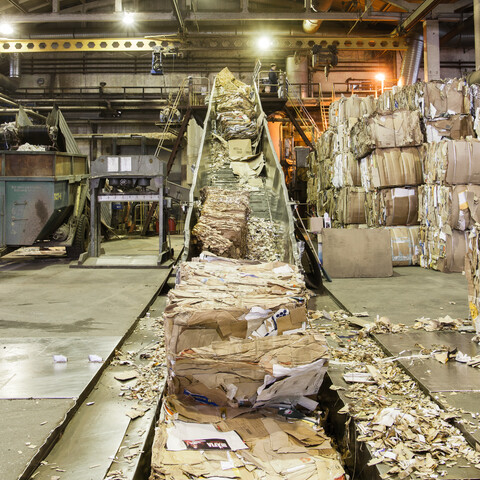Is the Paper Industry Sustainable?
Is the paper industry sustainable?

YES, the paper industry is sustainable.
Paper products are made from trees, which are a renewable resource, and recycled paper. About 80% of U.S. paper mills use some recycled paper fiber to make renewable products like packaging, office paper, newspaper, and paper towels.
Even so, the industry is working to improve its sustainability through innovation and sustainability initiatives.
How is the paper industry sustainable?
Sustainable practices are the foundation of the paper and wood products industry, such as:
- Sustainable Forest Management
- Efficient Manufacturing
- Use of Renewable Bioenergy
- Sustainable Water Management
- Paper Recycling
AF&PA member companies set 5 sustainability goals for 2030 to help advance sustainable products for a sustainable future.
How does the paper industry support sustainable forestry?

As a condition of membership, AF&PA members are committed to sustainable forest management and sourcing wood from responsibly managed forests.
Trees are harvested to make essential and sustainable paper and wood products. And the paper industry uses every part of the tree so nothing goes to waste.
Then, trees are replanted and grown again while protecting the ecosystem of the forest. Careful harvesting and planting ensures forests for decades to come.
Today, U.S. forests are strong. The U.S. grows twice the volume of trees than is harvested and more than 1 billion trees are planted in the U.S. each year.
Does the paper industry use a lot of energy?
Pulp and paper manufacturing is energy intensive. Energy represents one of the most significant costs for a mill’s operation. Increasing energy efficiency is a fundamental sustainability objective of AF&PA members.
Since 2005, AF&PA members have improved energy efficiency by more than 13%. This is largely due to increased use of renewable energy like biomass.
Does the production of paper generate a lot of greenhouse gas emissions?

The paper and wood products industry was among the first manufacturing industries to take voluntary action to reduce greenhouse gas (GHG) emissions.
Since 2005, AF&PA members have reduced GHG emissions by more than 24%. And they’ve committed to reducing GHG emissions by 50% by 2030!
The paper industry is reducing GHG emissions by:
- Improving the energy efficiency of mills
- Increasing the use of renewable energy, such as biomass and hydropower
- Investing in newer, more efficient technology
Learn more about the paper industry’s commitment to sustainability:

Student Design Challenge Winners Focus on Innovative and Sustainable Paperboard Packaging
The Paperboard Packaging Alliance challenges students to design innovative paperboard packaging solutions. Student teams from the Fashion Institute of Technology and California Polytechnic State University were named winners of the 2022 Student Design Challenge.

Forest Management Key to Healthy Forests
Blair Bishop is a registered forester and the owner of Bishop Forestry and Land PLLC. Bishop believes to help forests thrive now and in the future, others need to learn about managing healthy forests.

Jesse Levine Reflects on AF&PA’s Sustainability Progress and Future Ahead
With a proven track record in sustainability, the paper and wood products industry attracts professionals who are passionate about the environment. This includes professionals like Jesse Levine, AF&PA's Senior Director of Energy and Environmental Policy.
